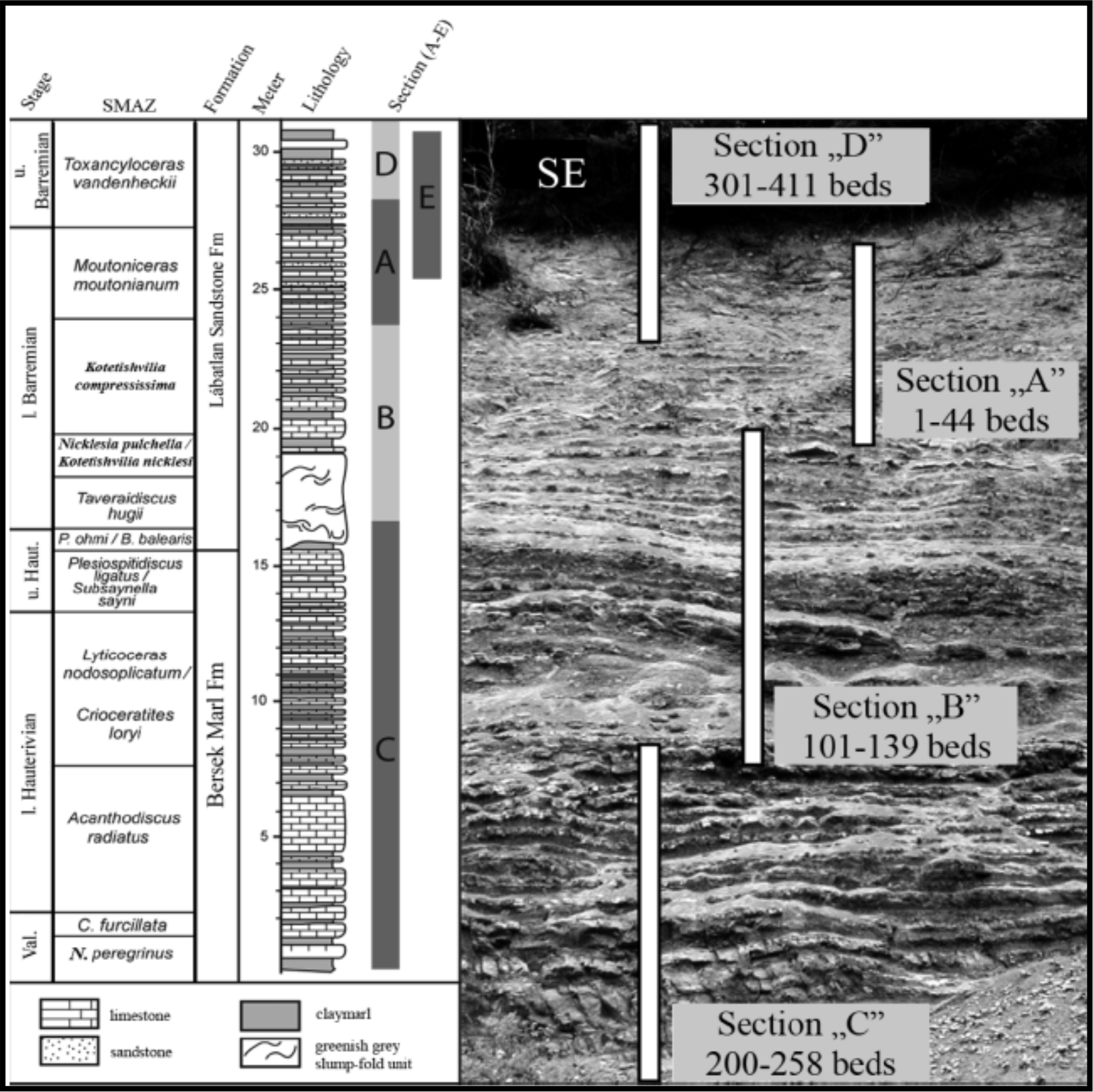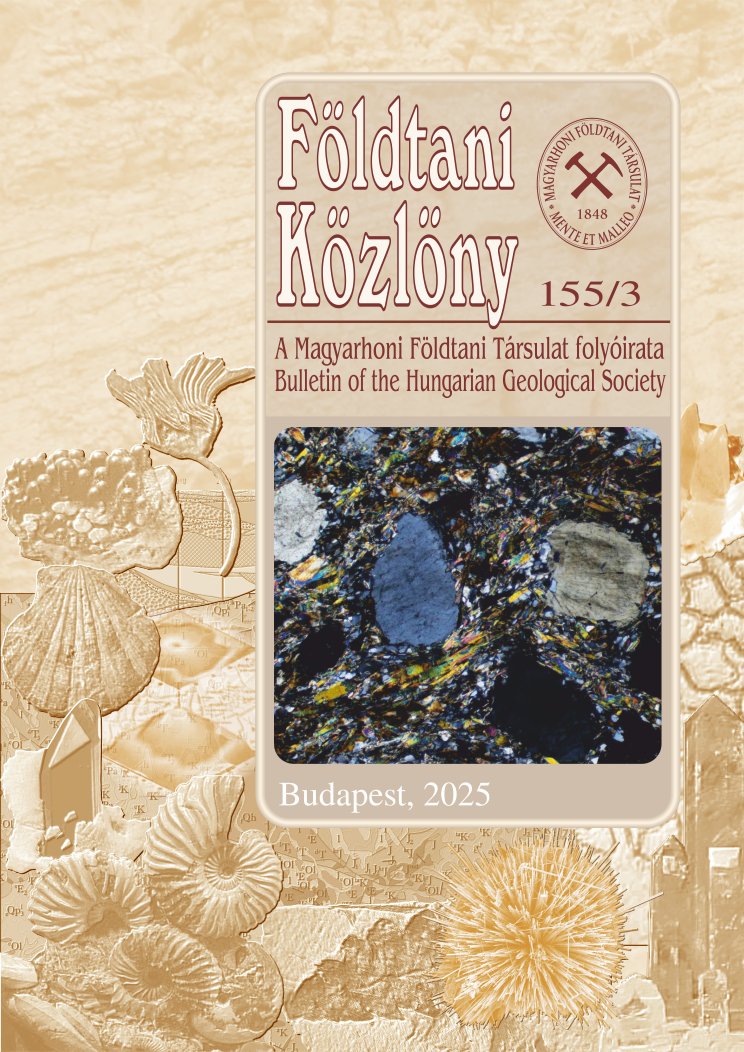First report of the Mid Barremian Event from the Transdanubian Range (Hungary) and associated Leptoceratoididae (Ammonoidea) fauna
Abstract
Here the distribution of criocone members of the family Leptoceratoididae that proliferated during the early and late Barremian is investigated. We attempted to identify environmental factors that may have influenced the abundance, diversity and palaeoecology of the group. Specimens of this ammonite family were found at two Hungarian localities: the Bersek Hill (Gerecse Mountains) and the Sümeg Süt-17 drill core (Southern Bakony).
Our most important stratigraphic result is the integration of stratigraphic frameworks of different autors from the Bersek Hill section which enabled us to precisely evaluate the stratigraphic distribution of this ammonite family. This integrated stratigraphy can be used with high accuracy for the Toxancyloceras vandenheckii Zone and is reliable for the Moutoniceras moutonianum Zone, but its accuracy for the lower part of the Kotetishvilia compressissima Zone is less stable. Our taxonomic analysis confirmed that Karsteniceras and Leptoceratoides should be kept as separate genera. In the Bersek Hill sections, family Leptoceratoididae is represented by Karsteniceras ibericum is the most common species found in basal K. compressissima to basal T. vandenheckii Zones. Leptoceratoides balernaensis occurs in the M. moutonianum and Leptoceratoides pumilus occurs mainly in the T. vandenheckii Zone. Their stratigraphic occurrence displays that only a few beds overlap at the top M. moutonianum Zone. In the Süt-17 borehole, the family is monospecific with L. pumilus occurrences. Unfortunately, the stratigraphic position of the Moutoniceras moutonianum Zone in Süt-17 borehole could only be inferred indirectly. Local response of Leptoceratoididae to the Mid Barremian Event shows spatial distribution patterns and resulted in different assemblage composition between the two localities. Discussion on lifestyle and paleoecology of criocone Leptoceratoididae ammonites is presented. Comparing our paleontologic findings to previously measured stable isotope data on belemnite rostra from Bersek Hill, we suggest that within the Moutoniceras moutonianum Zone, a sudden +1‰ shift in the stable carbon isotope excursion indicates the Mid Barremian Event (MBE). The -1.5‰ shift in the stable oxygen isotope excursion also indicates warming associated with rapid environmental change. During this time interval, increased organic matter entered into the Gerecse basin that could have induced increased primary productivity, hence dysoxic environment on the ocean floor. The increasing organic matter content was probably well tolerated by members of the family Leptoceratoididae and by other ammonite taxons that might have lived in the epipelagic zone, while certain groups of amonites are missing from these strata.
















